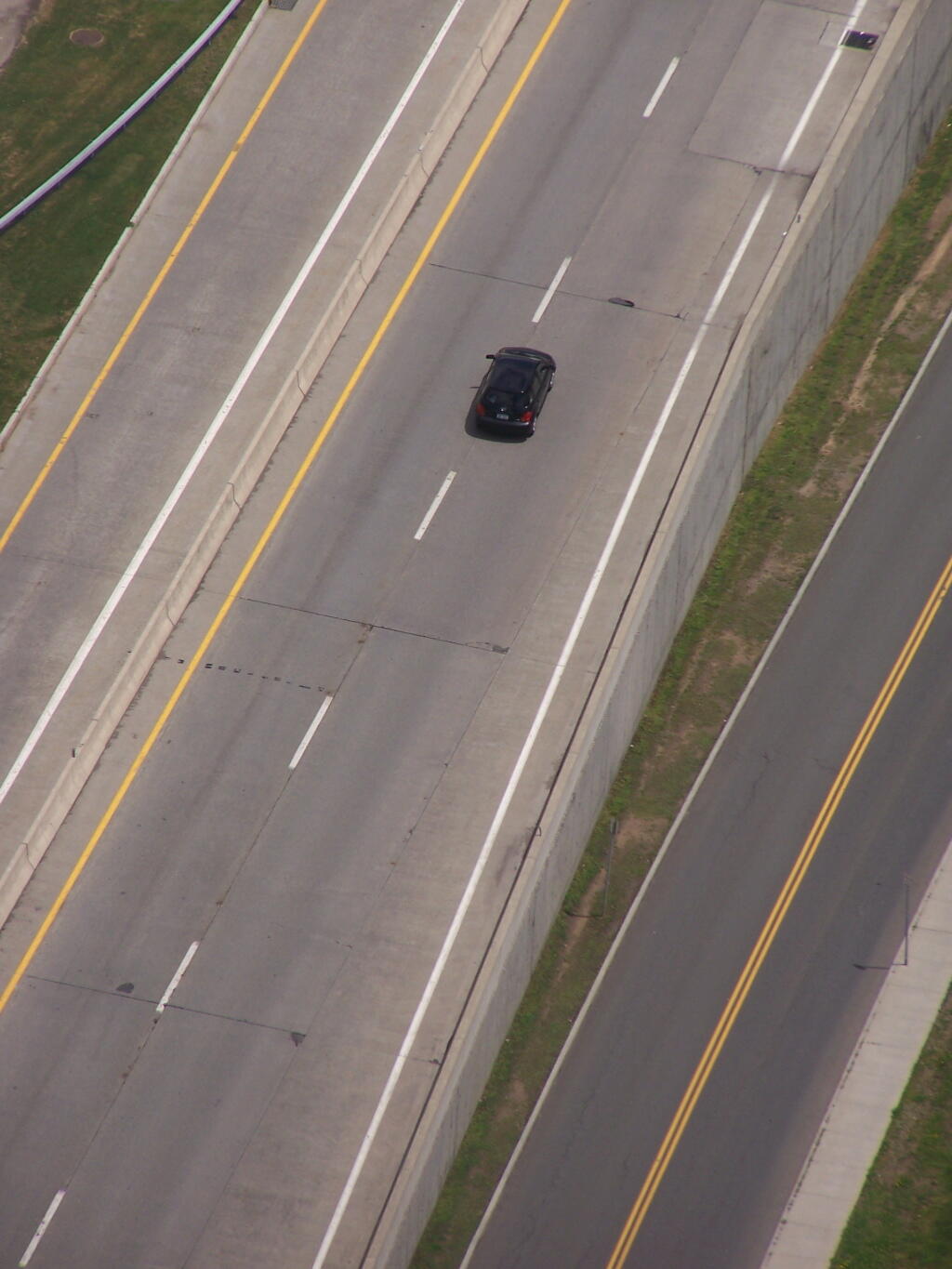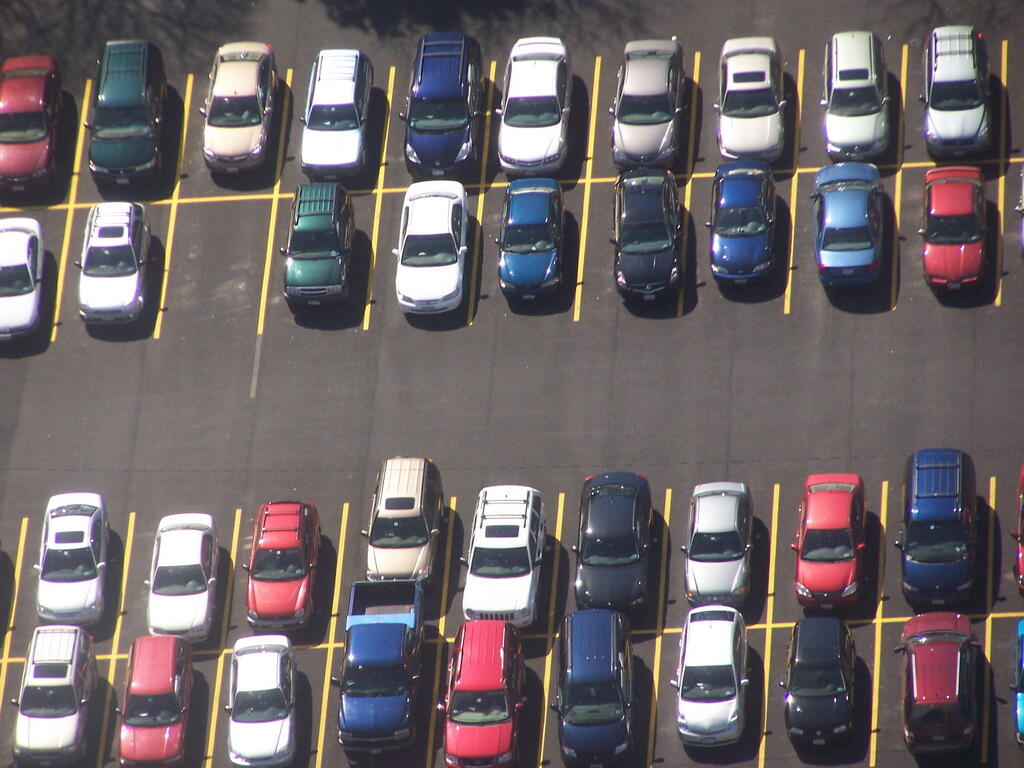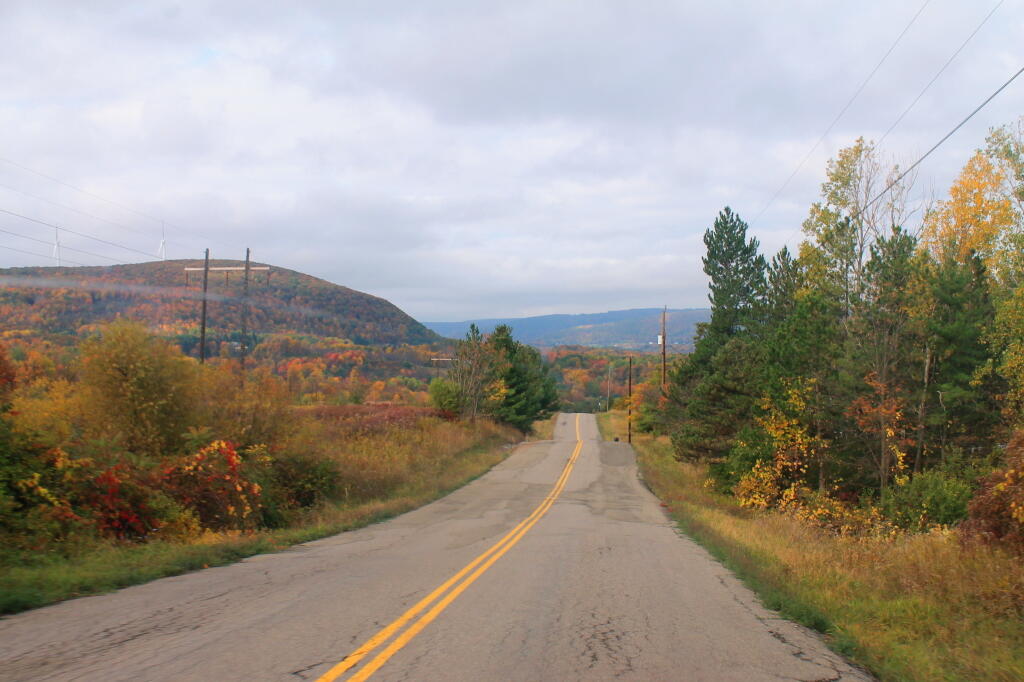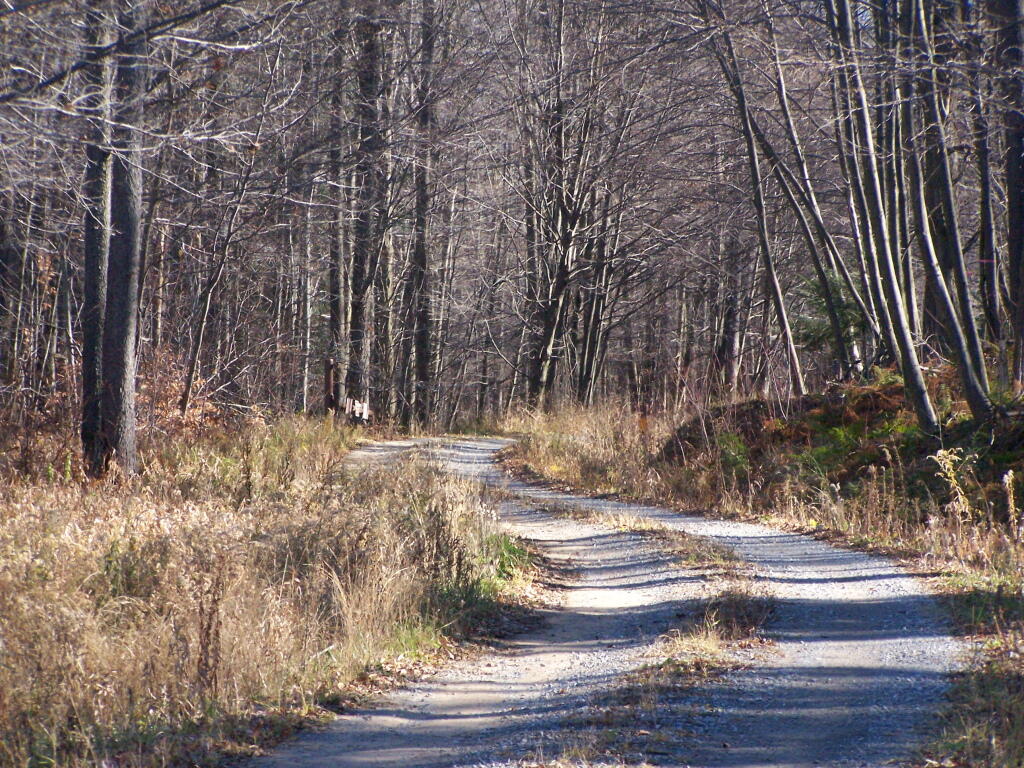View Larger Map
Look at any American city from an aerial photo…
What is the first thing you see? Most likely it’s the highway system and it’s connected parking lots.

Near the superhighways is a dead-zone — not just dead grass from the copious amount of salt laid down, but also an economic dead zone, because nobody wants to live next to the rumble and pollution of an expressway. Cars make a lot of noise, that goes through walls and generally makes humans miserable. Cars spew toxic gases shorten people’s lives. When a driver is distracted or makes a mistake, they become deadly weapons that take life indiscriminately.

Automobiles kill cities. It’s that simple.
But they also kill the countryside too, by demanding cities grow larger and larger, sprawling out into the countryside to accommodate the cars need for parking and high-speed roads to move them from place to place smoothly. Suburbia isn’t about homeownership, is as it’s about having a place to put the automobile, where it can be safely parked off the street.

There are plenty of homes in cities. For generations before the automobile, homeowners-owned row houses in the city. The problem is dense urban areas lack places to park automobiles safely. So people choose to move out to the suburbs, where they can have a garage and a driveway to park their cars. In the suburbs, one only has to drive a short distance to a freeway then to another vast parking lot at the office campus.

Society needs to rethink it’s relationship with automobile.
Cars are a lot of fun, used in moderation. Like an occasional drag on a cigarette or a cold beer after work, driving is a pleasurable activity on the open road, in a rural area. But cars don’t belong in cities. Having a lot of horsepower, and dropping the gas pedal can be a lot of fun.

I think in the future, automobiles will be used primarily as something you use on Sunday after church, to go out on a picnic in the country, following lush tree-lined parkways. Parks will be located at nearly every exit of the parkway. People will use cars on vacations to go places too unpopular to be worthwhile to run a transit line. Maybe also driven by farmers and rural residents, at least to a park and ride lot on the outskirts of city, which you would take a transit vehicle the rest of the way.



